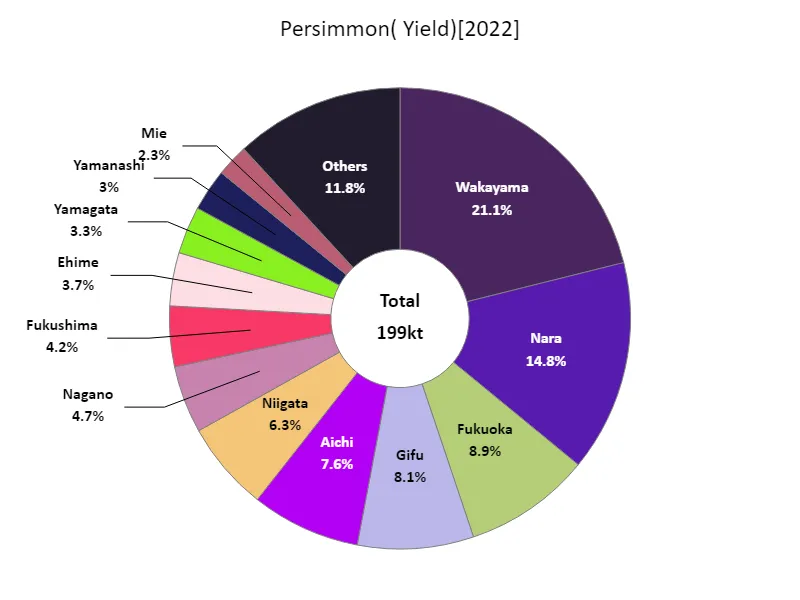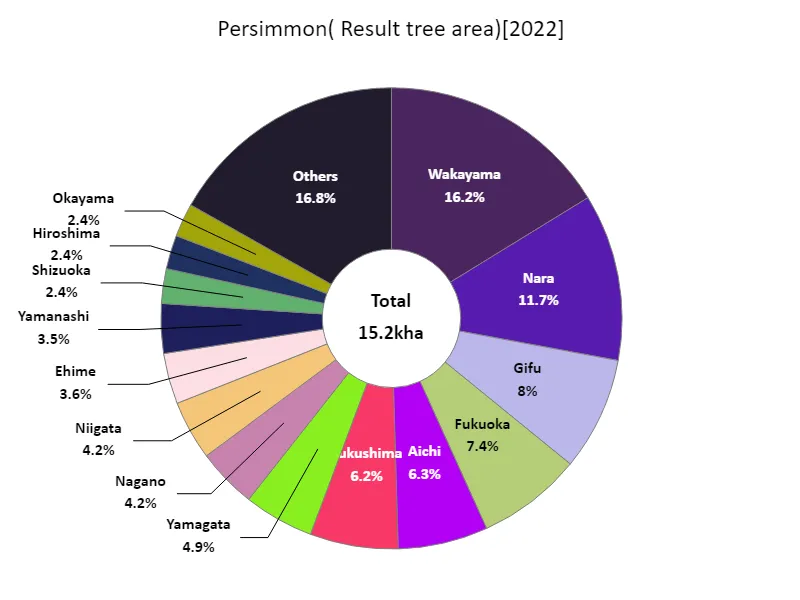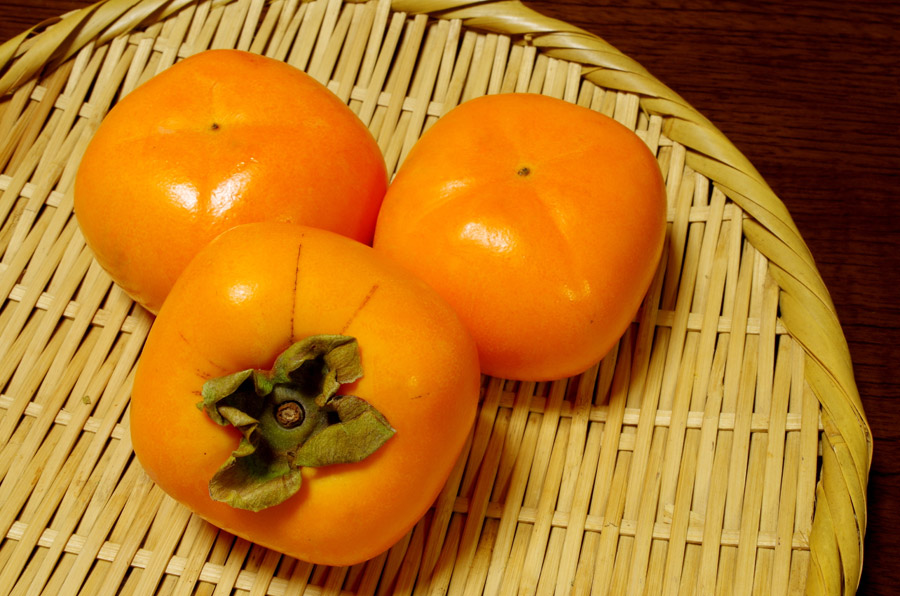Abstract
Data on yield, fruiting area, and shipping volume in Japanese persimmon farming show some interesting trends. According to the latest data for 2022, the national persimmon harvest was 216kt, the fruiting tree area was 17.8kha, and Wakayama had the highest shipping volume at 37.9kt. These figures suggest that oyster farming in Japan is stable, with active harvesting and shipping. Also, since Wakayama has an advantage in terms of shipping volume, there may be differences in production volumes between regions. However, overall, oyster production and shipping volumes are stable, and it appears that supply and demand are relatively balanced. In the future, sustainable development of oyster farming will be required, taking into account the possibility that productivity may be affected by factors such as technological advances and climate change.
Persimmons harvest volume (main data).
In Japanese oyster farming, harvest volume peaked in 1973 at 347kt and has been gradually declining over the following decades. The national harvest volume in 2022 represents 62.2% of the peak, showing a clear downward trend over this period. There are several possible factors behind this trend. For example, urbanization and industrialization have led to a decrease in farmland and labor force, while agricultural mechanization has led to increased productivity. The impact of climate change is also a factor to consider. On the other hand, due to consumers’ health consciousness and diversifying food culture, demand for oysters has remained at a certain level. Due to these factors, Japanese oyster farming has undergone changes over the past few decades, with a trend towards declining production, but demand has remained stable. In the future, the introduction of more sustainable agricultural techniques and the exploration of production methods that make use of regional characteristics will be essential for the development of oyster farming.


The maximum is 347kt[1973] of Japan, and the current value is about 62.2%
Persimmons harvest volume (by prefecture).
According to the latest data for 2022, Wakayama has the largest oyster harvest in Japan, reaching 42kt. Based on past trends, Wakayama is thought to be a particularly promising region for oyster production. It is also believed that Wakayama is likely to have an advantage over other prefectures. Factors that affect oyster production include geographical conditions, climate, developments in agricultural technology, and farmers’ experience. The increasing yields in Wakayama suggest that a combination of these factors may be favoring oyster production in this region. In the future, expanding oyster production, mainly in Wakayama, and promoting production in other regions will likely become important initiatives for the development of oyster farming in Japan.


The maximum is 42kt of Wakayama, the average is 8.29kt, and the total is 199kt
Persimmon bearing tree area (main data).
In Japanese persimmon farming, the area of fruiting trees peaked at 30.6 kha nationwide in 1973, but has since gradually declined, and as of 2022 has settled at a level equivalent to 58.2% of the peak. This trend is thought to be due to structural changes in agriculture as a whole and socio-economic changes. The progress of urbanization and industrialization is leading to a decrease in farmland and shrinking operations due to the aging of farmers, which is also affecting oyster farming. Another factor is that oyster production requires a relatively large area of paddy fields, making it difficult to secure and manage the land. On the other hand, in recent years, there has been a tendency for the rapid decline in the area of fruiting trees to be curbed due to agricultural policies and the spread of efficient cultivation methods through technological innovation. In the future, there will be a need to promote sustainable oyster farming, make more efficient use of farmland, and strengthen support measures for farmers.


The maximum is 30.6kha[1973] of Japan, and the current value is about 58.2%
Persimmon bearing tree area (by prefecture).
Data on the fruiting tree area in Japanese persimmon farming in 2022 reveals that Wakayama has the largest overall area at 2.47kha. This figure is the current maximum and suggests that Wakayama is a particularly powerful region for oyster production. Wakayama is located on the coastline and has suitable climate and soil conditions for growing oysters. On the other hand, it appears that the fruiting tree area is relatively small in other regions. This is thought to be due to differences in climate and soil conditions from region to region, as well as the regional characteristics related to oyster production. In addition, because oyster cultivation requires large areas of paddy fields, the reduction in farmland due to urbanization and industrialization may also be a factor. In the future, expanding oyster production, centered in Wakayama, and promoting production in other regions will likely be important efforts for the development of oyster farming in Japan.


The maximum is 2.47kha of Wakayama, the average is 634ha, and the total is 15.2kha
Persimmons shipment volume.
According to shipping volume data for Japanese oyster farming in 2022, Wakayama recorded the highest overall volume of 37.9kt. Additionally, the overall average shipping volume is 7.23kt, with a total shipping volume of 174kt. These figures make it clear that Wakayama is a major producer of oysters. Wakayama has the perfect climate and soil conditions for oyster production. On the other hand, the average shipping volumes of other regions are lower than Wakayama, indicating that production volumes vary from region to region. This variation is thought to be due to differences in regional climate, soil conditions, and agricultural techniques. In addition, with the total shipping volume standing at 174kt, it can be said that Japanese oyster farming maintains a relatively stable production system. However, we must also pay close attention to future challenges, such as the balance between supply and demand and changes in consumption trends. In the future, improving the efficiency of oyster production in each region and promoting sustainable agricultural policies will be essential for the development of oyster farming in Japan.


The maximum is 37.9kt of Wakayama, the average is 7.23kt, and the total is 174kt



Comments